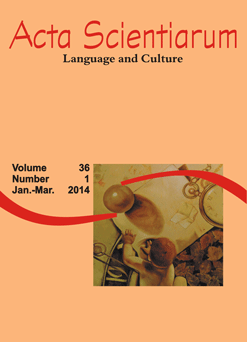<b>Event, beauty and knowledge in <i>Death in Venice</i></b>
Abstract
In German literature, a specific genre, the novela (Novelle) stands out among the different possibilities for setting events in fiction. It has served several writers from the eighteenth century to the present day to discuss events as something beyond human understanding. Goethe defined the ‘novela’ as an unprecedented event (unerhörte Begebenheit). In Thomas Mann’s novela Death in Venice, the event appears in the figure of the young Tadzio. His unusual beauty, related by Gustav von Aschenbach to mythical figures, not only arouses Aschenbach’s passion but leads him to acknowledge the tension between the desire of chaos and desire of form. The event, in the form of Tadzio’s ambiguous beauty, leads to self-knowledge and to ruin, and provides an insight into the relationship between beauty and knowledge in Thomas Mann.
Downloads
DECLARATION OF ORIGINALITY AND COPYRIGHTS
I Declare that current article is original and has not been submitted for publication, in part or in whole, to any other national or international journal.
The copyrights belong exclusively to the authors. Published content is licensed under Creative Commons Attribution 4.0 (CC BY 4.0) guidelines, which allows sharing (copy and distribution of the material in any medium or format) and adaptation (remix, transform, and build upon the material) for any purpose, even commercially, under the terms of attribution.
Read this link for further information on how to use CC BY 4.0 properly.




















6.png)









